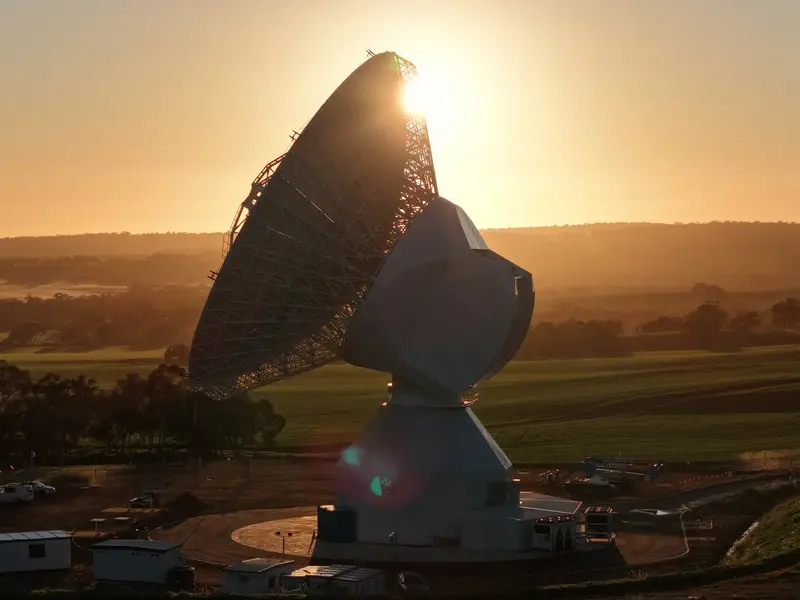The European Space Agency (ESA) has officially commissioned its most advanced deep-space antenna to date in the secluded township of New Norcia, Western Australia — a landmark development that significantly boosts Europe’s capacity to communicate with distant spacecraft.
Unveiled on October 4, 2025, the New Norcia 3 (NNO-3) antenna represents a $110 million investment in Europe’s deep-space infrastructure. The inauguration ceremony was attended by ESA Director General Josef Aschbacher and Australian Space Agency head Enrico Palermo, underscoring the growing collaboration between Europe and Australia in the global space sector.
Standing 35 metres in diameter, NNO-3 joins ESA’s Estrack network as its fourth deep-space antenna — and the second stationed at the New Norcia complex. What distinguishes this installation from its predecessors is the integration of artificial intelligence, marking a first in ESA’s ground-based operations. The AI system autonomously refines signal detection, suppresses background noise, and dynamically adjusts the antenna’s alignment to maintain precise communication with spacecraft billions of kilometres away.
In an interview with The Sunday Times, Aschbacher emphasized the antenna’s scientific value, noting that it “enables us to peer deeper into the universe and sustain communication with some of our most distant missions.”
The NNO-3’s receiver units operate at cryogenic temperatures of -263°C—a mere fraction above absolute zero—to amplify the sensitivity needed for capturing faint transmissions from deep-space probes.
Among its first assignments, the antenna will support two of ESA’s most ambitious projects: the Jupiter Icy Moons Explorer (JUICE) and BepiColombo, a joint mission with Japan’s JAXA targeting Mercury.
- JUICE aims to probe the icy moons of Jupiter—Ganymede, Callisto, and Europa—in search of subsurface oceans that could harbor conditions for life. Scientists believe these moons conceal more water beneath their crusts than all of Earth’s oceans combined.
- BepiColombo seeks to unravel Mercury’s magnetic field and geology under the planet’s extreme heat and radiation, a challenging feat made possible through sustained communication via NNO-3.

Once fully operational in 2026, NNO-3 will extend its services to several other key missions, including Solar Orbiter, Mars Express, Hera, and forthcoming projects such as Plato, Envision, Ariel, Ramses, and Vigil.
Beyond technical achievement, the antenna also embodies strategic significance. It reinforces Europe’s autonomous capability to track and operate deep-space missions, reducing dependence on networks like NASA’s Deep Space Network or other international partners.
Calling the installation a “significant step forward”, Aschbacher highlighted that the collaboration with Australia exemplifies how international partnerships can advance scientific exploration and technological innovation.


